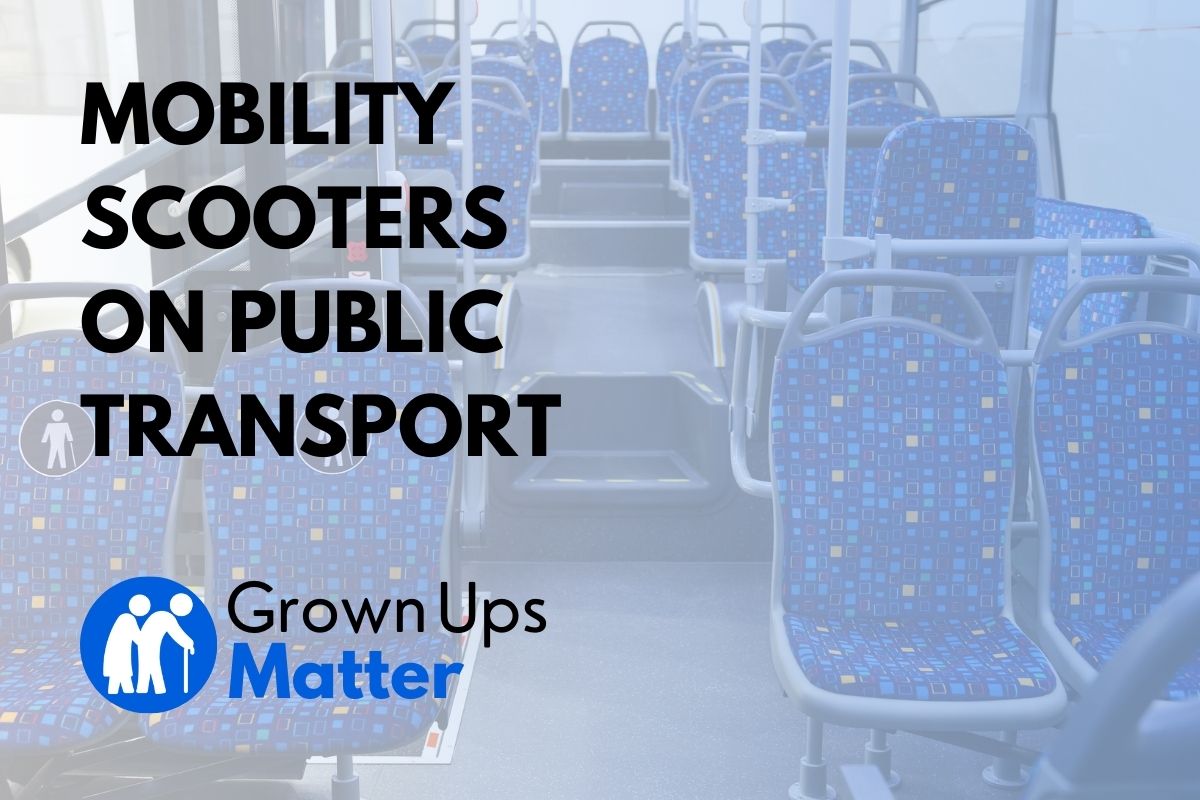Navigating the world of public transport can be a challenge, especially when you rely on a mobility scooter for independence and accessibility.
One frequently asked question we encounter is, “Are mobility scooters allowed on public transport?”
The short answer is, yes.
However, the extent to which mobility scooters are accommodated can greatly vary depending on the transport mode and specific policies of the transport operator.
This article aims to provide an in-depth look into the regulations and guidelines surrounding the use of mobility scooters on public transport.
Key Takeaways
Before we delve deeper, here are the key takeaways from this article:
- Americans with Disabilities Act (ADA): The ADA, enacted in 1990, includes provisions requiring public transportation authorities to make their services accessible to individuals with disabilities, including those using mobility scooters. Compliance with ADA regulations, however, can vary.
- Buses: Most public buses are equipped to accommodate mobility scooters, typically through the use of lifts or ramps. However, the user may need to transfer to a regular seat, and the scooter’s size might limit accessibility.
- Trains: While trains often provide more space than buses, boarding can be challenging due to gaps between the train and platform. Not all train stations are fully accessible, but ongoing improvements are being made.
- Taxis and Ridesharing apps: While some taxis and ridesharing services like Uber offer wheelchair-accessible vehicles, this is not universally guaranteed. Users should check the specific accessibility options offered by each service.
- Airplanes: Air travel can be complex for mobility scooter users. Scooters must be checked in, with most airlines providing a wheelchair for the user in the interim. Understanding airline policies for mobility aids is crucial.
Americans with Disabilities Act (ADA)
The Americans with Disabilities Act (ADA) is a crucial piece of legislation that offers civil rights protections to individuals with disabilities, similar to those provided to individuals on the basis of race, color, sex, national origin, age, and religion. It ensures equal opportunity for individuals with disabilities in public accommodations, employment, transportation, government services, and telecommunications.
Under the ADA, public transportation authorities are required to make their services accessible to those with disabilities. This means that buses, trains, and other public transport services should accommodate mobility scooters. However, the degree to which these regulations are met can vary from one service provider to another, and some older vehicles or facilities may not be fully accessible.
For a comprehensive look at the rights of mobility scooter users and other individuals with disabilities, refer to the Americans with Disabilities Act.
Buses
Public buses are generally designed to be accessible to individuals with mobility issues. Most modern buses feature low floors with no steps, coupled with ramps or lifts that allow easy access for mobility scooters. Buses often have designated areas for wheelchair users, which can also accommodate mobility scooters. However, these spaces are often limited, and in busy times, you might have to wait for the next bus.
It’s also important to note that due to safety reasons, you may be required to transfer to a fixed seat while on the bus. So, even though mobility scooters are allowed on buses, certain practical considerations can affect their usability.
When selecting a mobility scooter, consider its dimensions. Buses have restrictions on the size of mobility scooters they can accommodate. Detailed information about the different types of scooters can be found in this comprehensive guide on Types of Mobility Scooters.
Trains
Trains, with their wider aisles and greater space, often represent a more comfortable means of public transport for mobility scooter users. However, boarding the train can sometimes present a challenge.
Gaps between the train and the platform, as well as the potential height difference, can make getting on and off the train difficult. Some train stations provide portable ramps to aid in boarding and alighting, but this service may not be available at all stations.
It’s crucial to research the specific train line you intend to use. While many urban train systems are fully accessible, not all stations may be. The good news is that accessibility improvements are continually being made. You can find more specific advice about using mobility scooters on trains and subways in our guide here.
Taxis and Uber or Ridesharing apps
When it comes to traditional taxis, it largely depends on the specific company and the type of vehicle they use. Some taxis might have enough boot space for a small, foldable mobility scooter, while others simply cannot accommodate these aids. Always contact your local taxi company beforehand to discuss their policies and the practicality of transporting your scooter.
In the case of Uber and similar ridesharing apps, the situation is slightly different. Uber, for instance, offers an option called “UberWAV” (Wheelchair Accessible Vehicles) designed to accommodate wheelchairs and, in some cases, mobility scooters. However, availability may vary based on location and time, and it’s always a good idea to communicate with your driver before they arrive.
For more information about how Uber and taxis deal with mobility aids, you might find this comprehensive guide helpful.
Airplanes
Air travel can be particularly challenging for mobility scooter users, due to strict security measures and the complexities of storing scooters on aircraft. The Air Carrier Access Act (ACAA) allows passengers with disabilities to bring their mobility devices onto planes, but some restrictions apply.
Airlines usually require mobility scooters to be collapsible and stored in the hold during the flight. Larger, non-collapsible scooters may not be permitted. It’s essential to notify the airline in advance about your scooter, as each airline has its specific policies and procedures.
Here’s a useful article on how to prepare your mobility scooter for airplane travel that can help you get ready for your next flight.
Best Practices and Rules for Scooters on Public Transport
Just as crucial as knowing where and how you can use your mobility scooter on public transport is knowing the etiquette and rules to follow.
Here are some guidelines to ensure a smooth journey:
- Pre-trip planning: Research the policies of the transport providers you plan to use. Contact them in advance if needed.
- Scooter size: Compact, foldable mobility scooters are often more manageable on public transport.
- Charging: Ensure your scooter is fully charged before your trip. Trips might take longer than expected, and finding a charging point can be a challenge.
- Safety: Always use your scooter’s safety features like seatbelts and brakes when on the move. Check out this article for more safety tips.
- Respect other passengers: Keep aisles clear and always adhere to the transport provider’s rules.
Recommended Mobility Scooters for Public Transportation
When it comes to choosing a mobility scooter for public transport, you’ll want to focus on compact, foldable models that can easily fit into small spaces and can be maneuvered effortlessly.
For instance, “travel” mobility scooters are designed to be lightweight and easily portable, making them ideal for regular use on public transport.
You might find this article on the best travel mobility scooters helpful in your search.
On the other hand, if you require a more robust scooter with higher weight capacity, a “folding” mobility scooter might be the best option.
They’re designed to be easily collapsed into a compact size, ideal for storage on buses, trains, or in the trunk of a taxi.
Before making your purchase, consider factors such as battery life, weight capacity, comfort, and reliability.
Also, consider the dimensions of the scooter when folded to ensure it will fit in the storage areas of your regular modes of transport.
Remember, each person’s mobility needs are unique, so it’s essential to select a scooter that not only fits your lifestyle and daily transport needs but also provides you with the support and independence you require.
Choosing the right mobility scooter can be a daunting task, but don’t worry, this comprehensive mobility scooter buying guide will help you make an informed decision.
Finally, whatever your choice, always remember the golden rule of mobility scooter users on public transport: respect the rights and comfort of all passengers, and plan your journeys with care.
Happy travels!
All the claims made in this article are only for informational purposes, based on the writer’s experience and not clinical advice. You should always consult your physician or physical therapist if you have any doubts about how this applies to your specific case.

Rami is an economist with a passion for personal finance and a desire to help people make the most of their retirement years. He’s also the tech mind that made all of this possible, and a marketing enthusiast. In his articles, Ramiro offers real-life advice and resources for seniors looking to manage their finances and make the most of their retirement savings. He is dedicated to helping his readers live comfortably and securely during their golden years.

